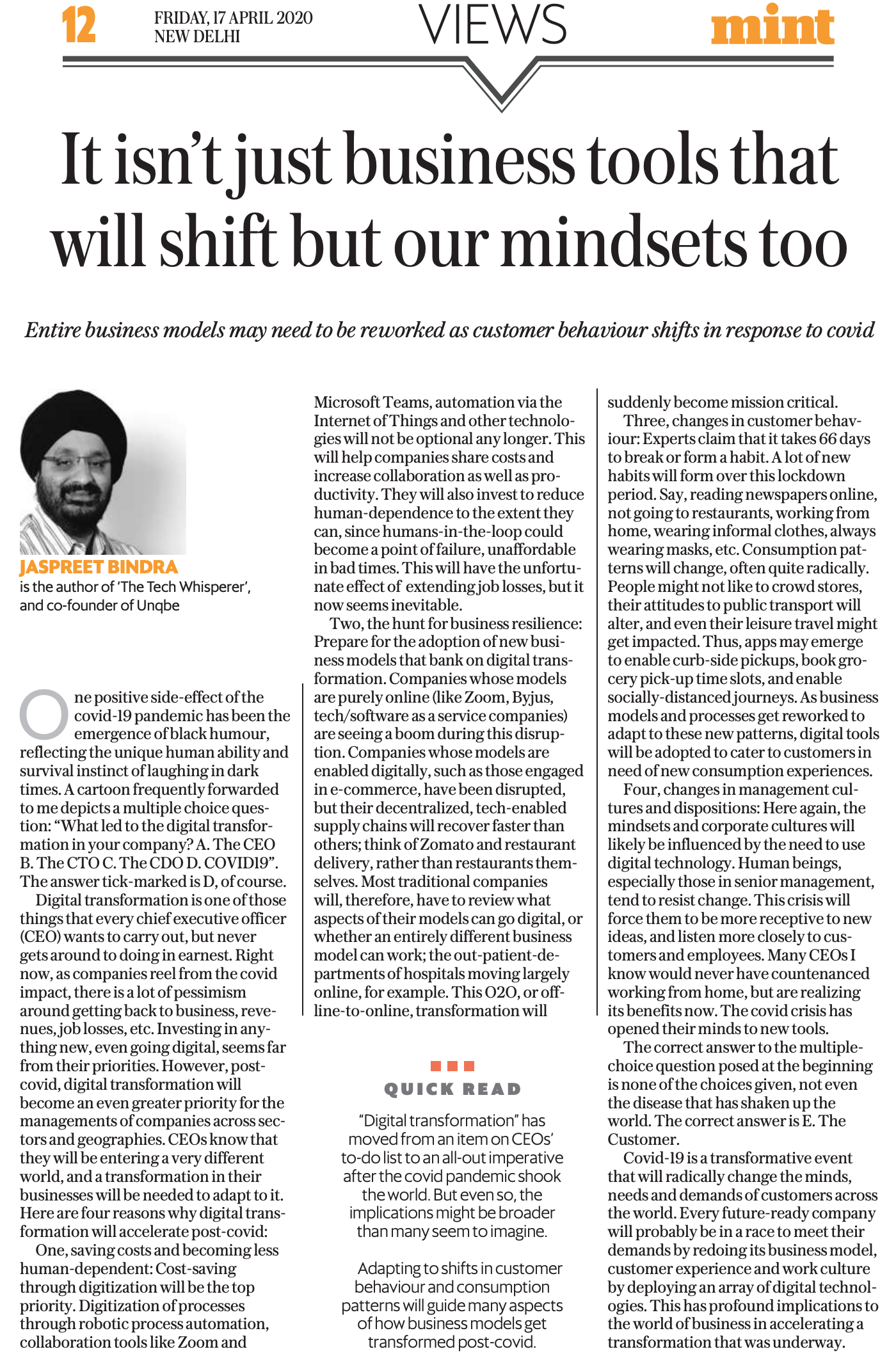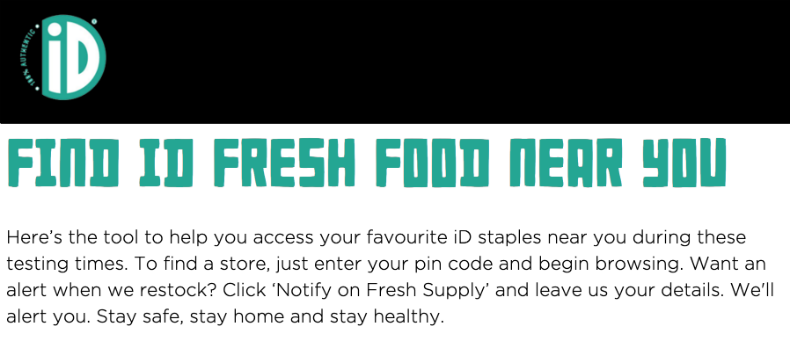
Store-locators are fairly common among large brands that have a lot of branches.
A more nuanced and useful store-locator is one that tells you what kind of products of the company are available near you.
ITC has an like that. You select the city, enter the pin code and type in a product from ITC’s expansive range… and the locator will tell you stores near you that you can buy that product from.

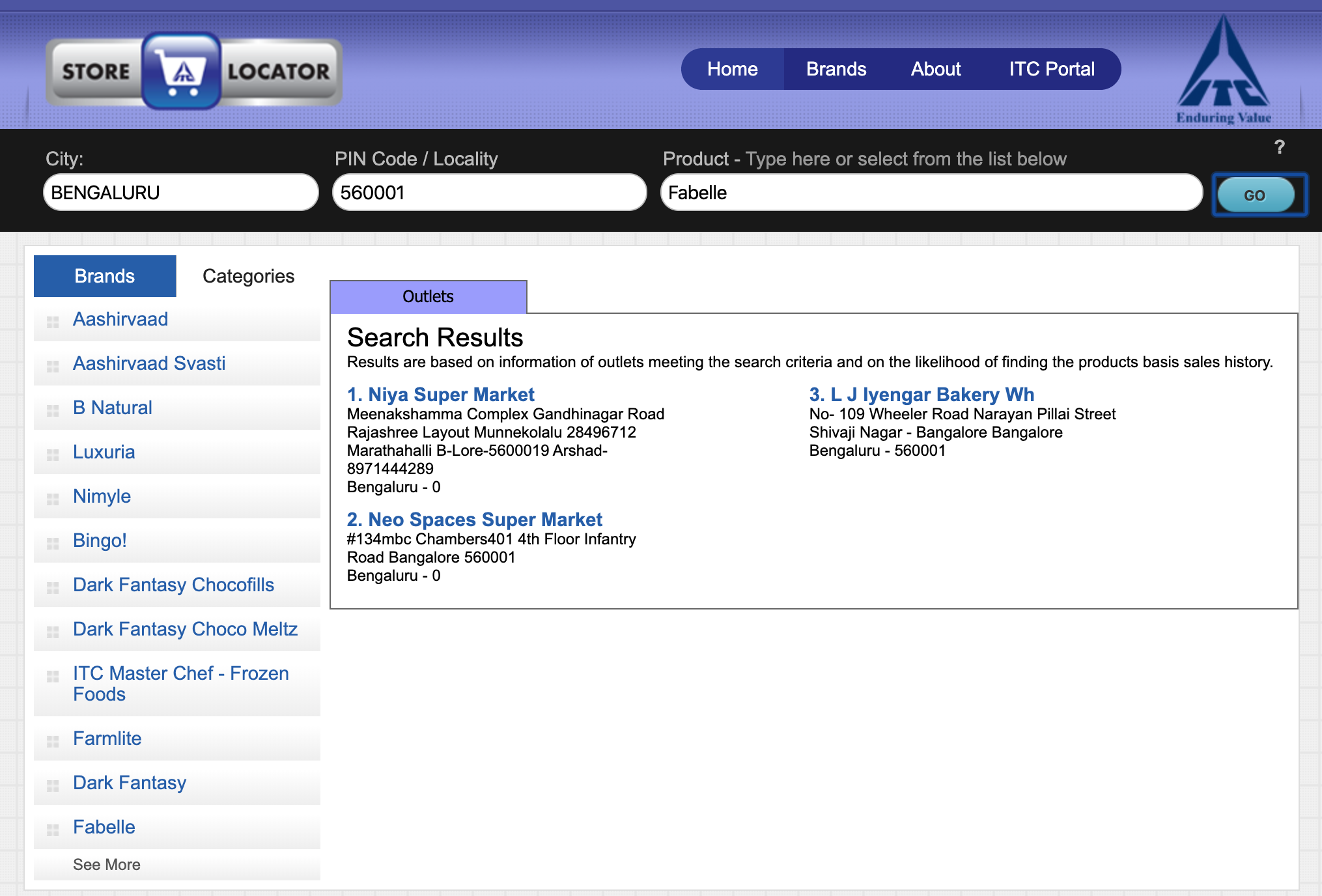
This is especially useful before you venture out to a nearby grocer store seeking a particular product. Earlier, we used to call them up and check with them; now we can use the store-locator to find such information.
But even ITC’s effort, impressive as it may be, is not a full-fledged digital transformation initiative. A comprehensive, always-updated list of stores, matched against products, is still a list-management exercise, though I fully understand the complexity it involves.
What , as a result of the pandemic-led increase in interest in its products, nudges closer to an impressive digital business.
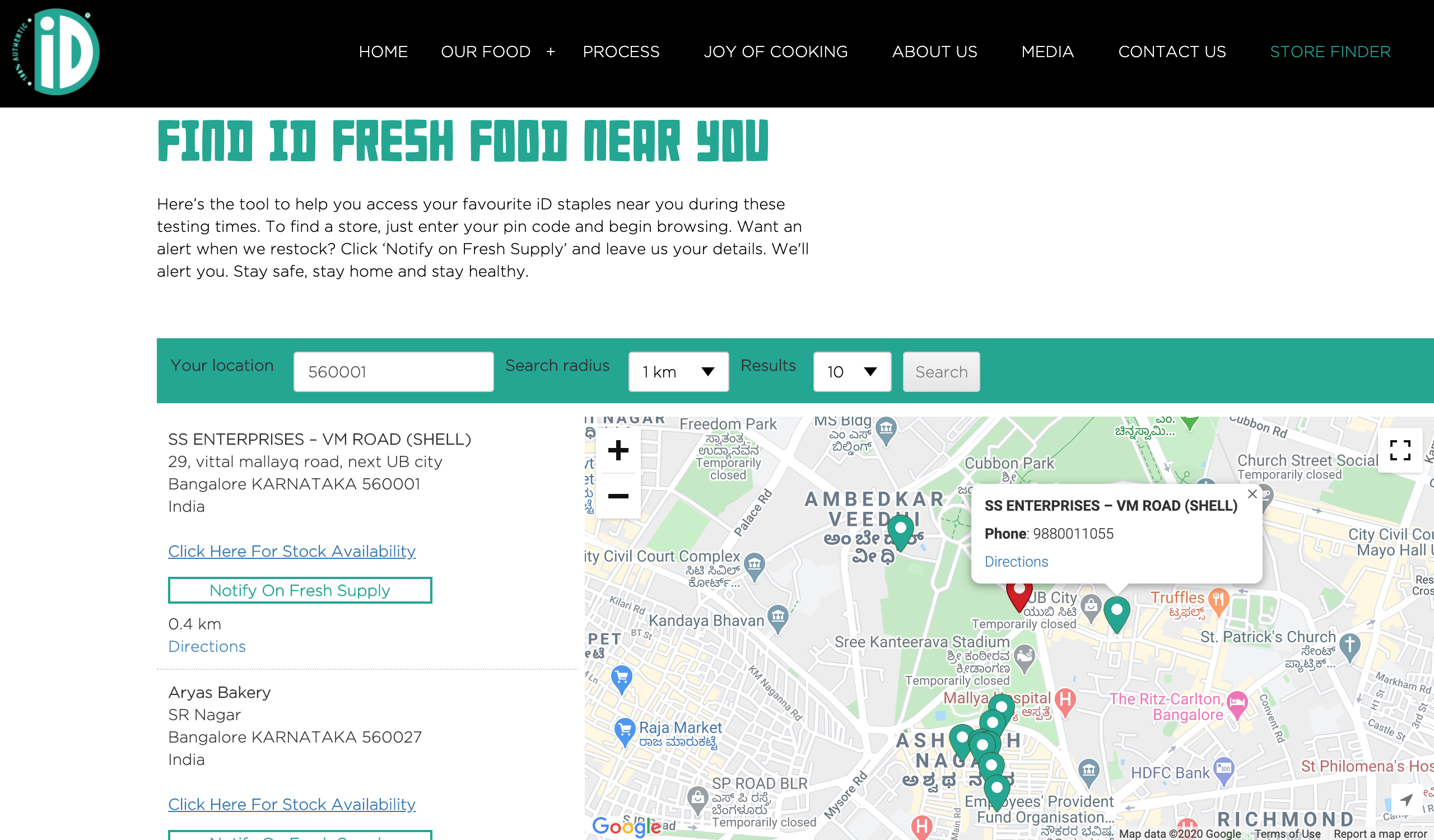
The basic store-locator is similar to ITC’s, but iD goes one step ahead by adding a ‘notify on fresh supply’ tab. If you leave your email ID and phone number with them, iD alerts you when fresh supply reaches the nearby store, via a text message!
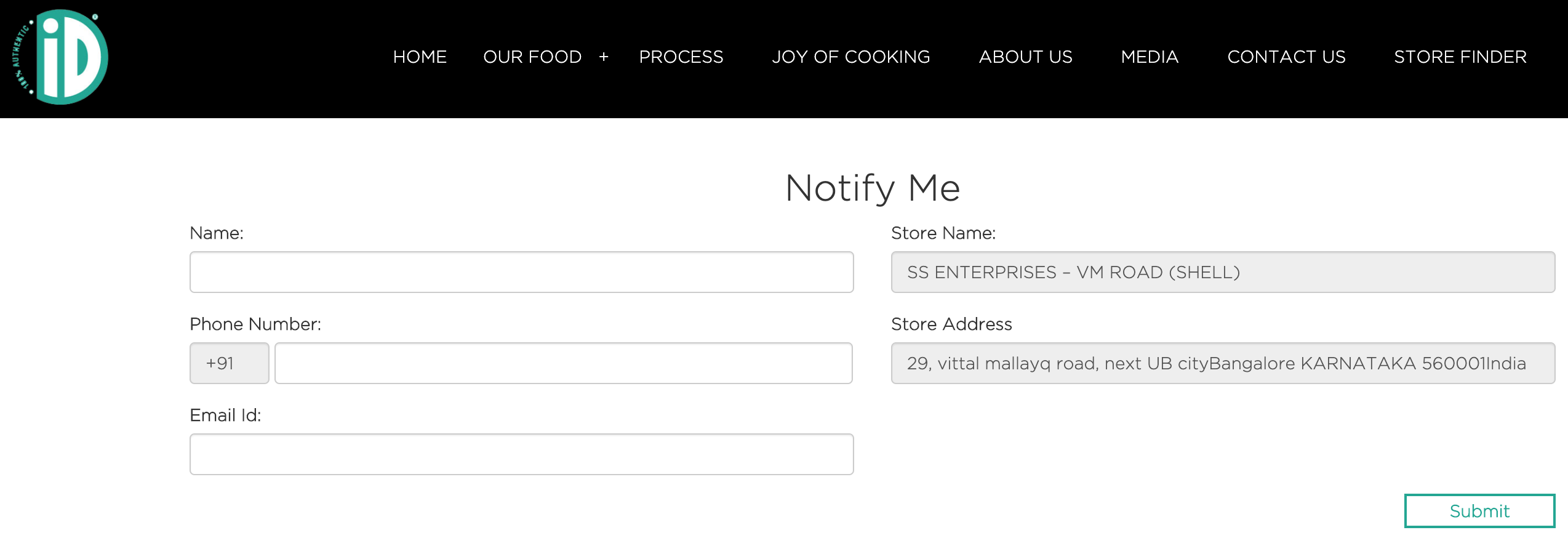
Imagine the effort that has gone into it. I used to see (before the pandemic/lockdown) iD’s mini-vans all over town and never thought much of it. After all, many companies that need to replenish stock have their own fleet. This even includes ATM cash replenishment fleet.
But, when I stepped out to a nearby kirana store to buy milk (since our supply from FreshToHome stopped, and we switched to BB-Daily the next day), I noticed an iD mini-van outside the store. This is a tiny kirana store 3 buildings away from my home. And on that deserted street, the only vehicle was this van. The driver was unloading iD batter from the vehicle, into the store’s cold storage shelf. As this van arrival and product transfer happens, iD’s system has to capture it to let a user know that fresh stock has been replenished in this store, if I have signed up for this alert!
All of this cannot happen manually. There are thousands of such vehicles for the brand across the country and there has to be an automated system to capture the arrival of fresh stock in each small store so that the overall store-locator with the alerting system for fresh stock works as a seamless process on its own. For context, iD sells via 30,000+ stores across 45 cities in India!
Now that is a fantastic demonstration of digital-first thinking! In fact, this process combines offline with digital beautifully, to be of genuine use to customers.
iD’s CEO, saying that they are planning to extend the fresh stocks alert feature for fruits and vegetables supplied by other vendors too!
Related: – This article mentions that the ‘store finder’ and ‘notify me’ features were done on war-footing in reaction to the increased demand! Very admirable!
I have not tried the alert system, but I assume that it has been tested well enough before making it public. This is an impressive effort in the absence of iD door-delivering their product (which is already possible via other online stores like Big Basket or Grofers).
And this is particularly useful during the times we are in – you can head out to your nearby kirana store only upon getting that alert from iD that fresh stock has arrived. Given the overall shortage of food (because state borders are closed) and the struggle by big-ticket e-commerce brands in managing the enormous surge of interest in online order and delivery, kirana groceries have become the lifeline for many people in India. Several media outlets have written about this extensively (see below).
And considering how essential fresh batter is (since it’s a raw material to make some of the most consumed dishes in India, like idlies and dosas; as critical as say, bread), this effort by iD is hugely welcome. And really well planned.
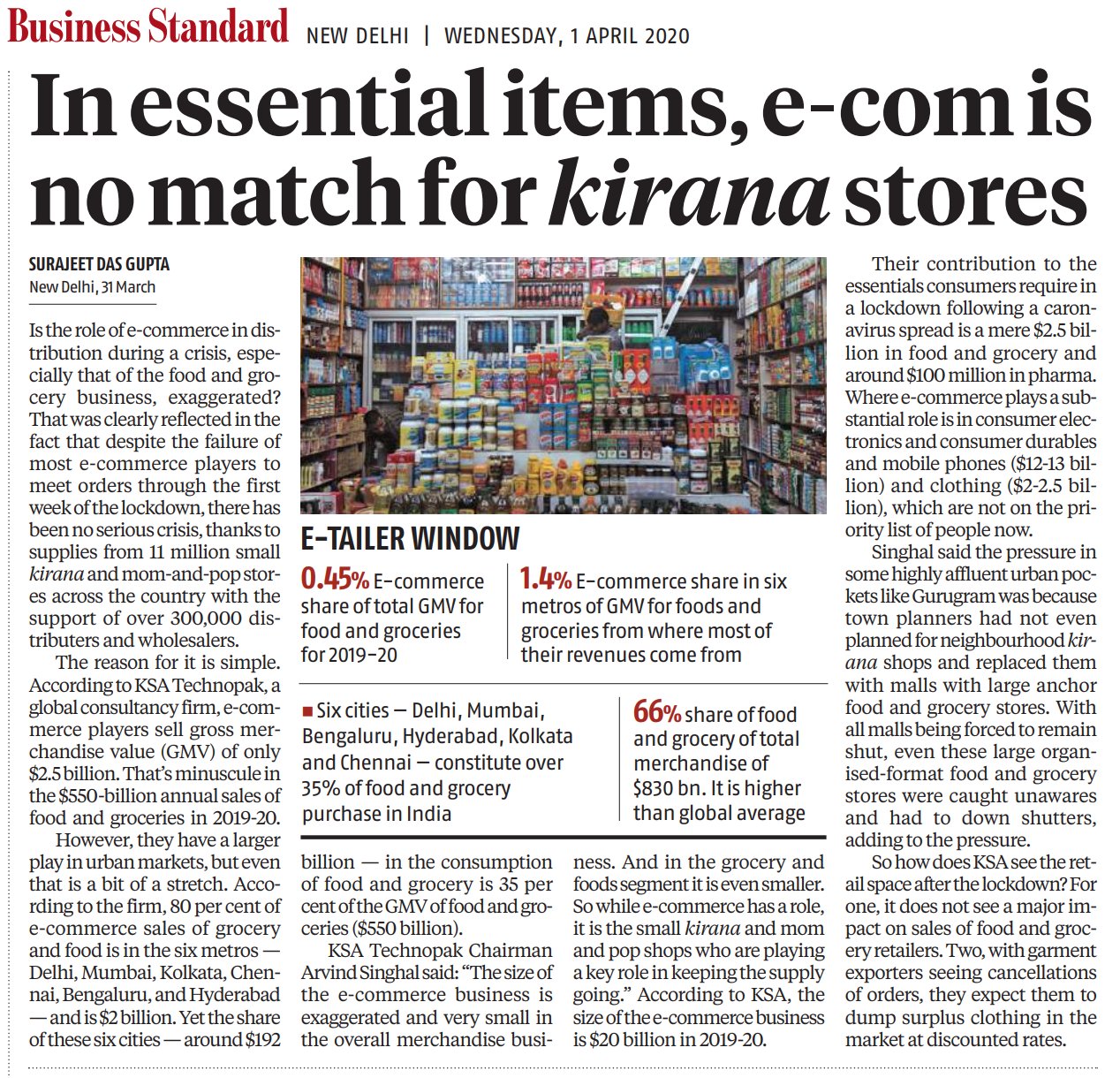
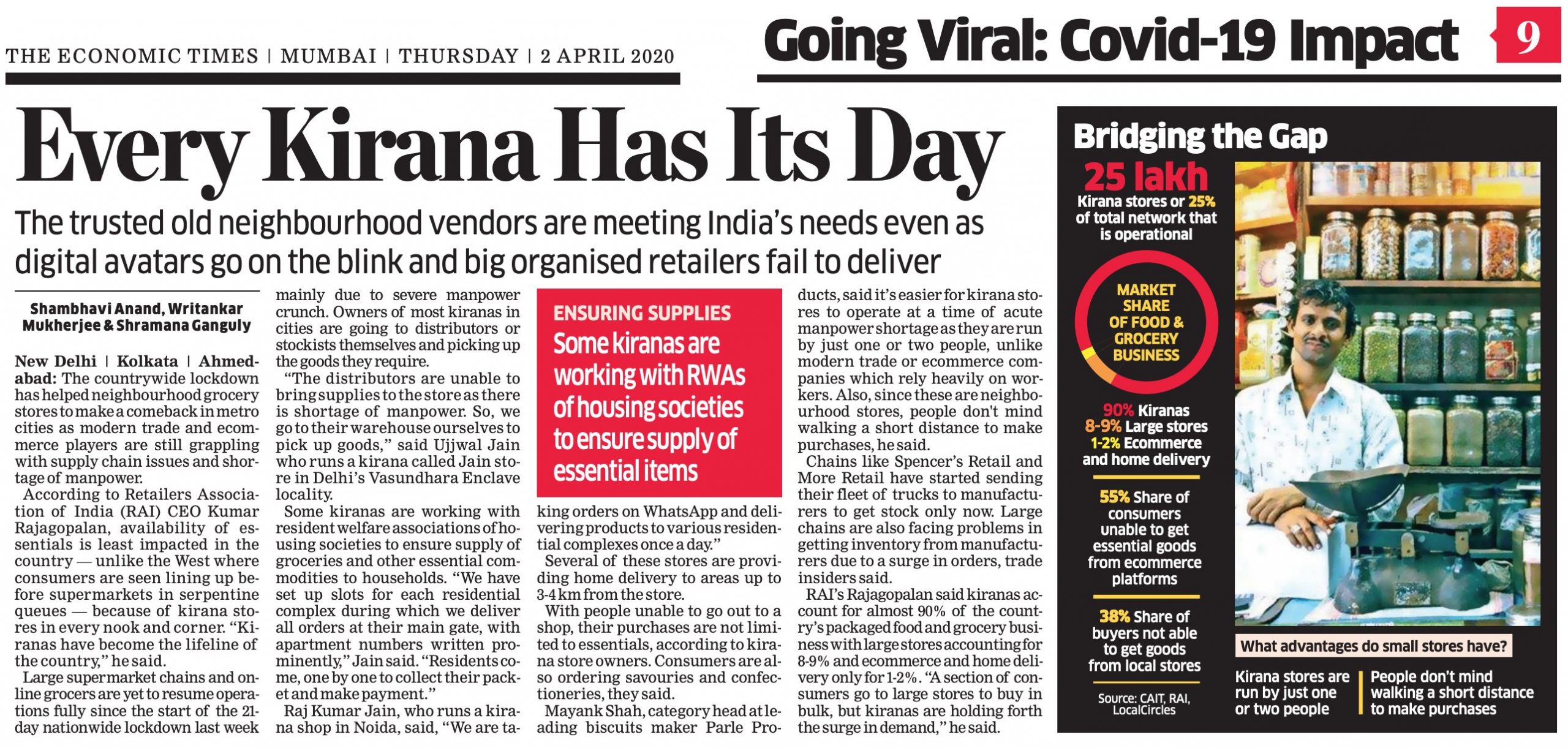
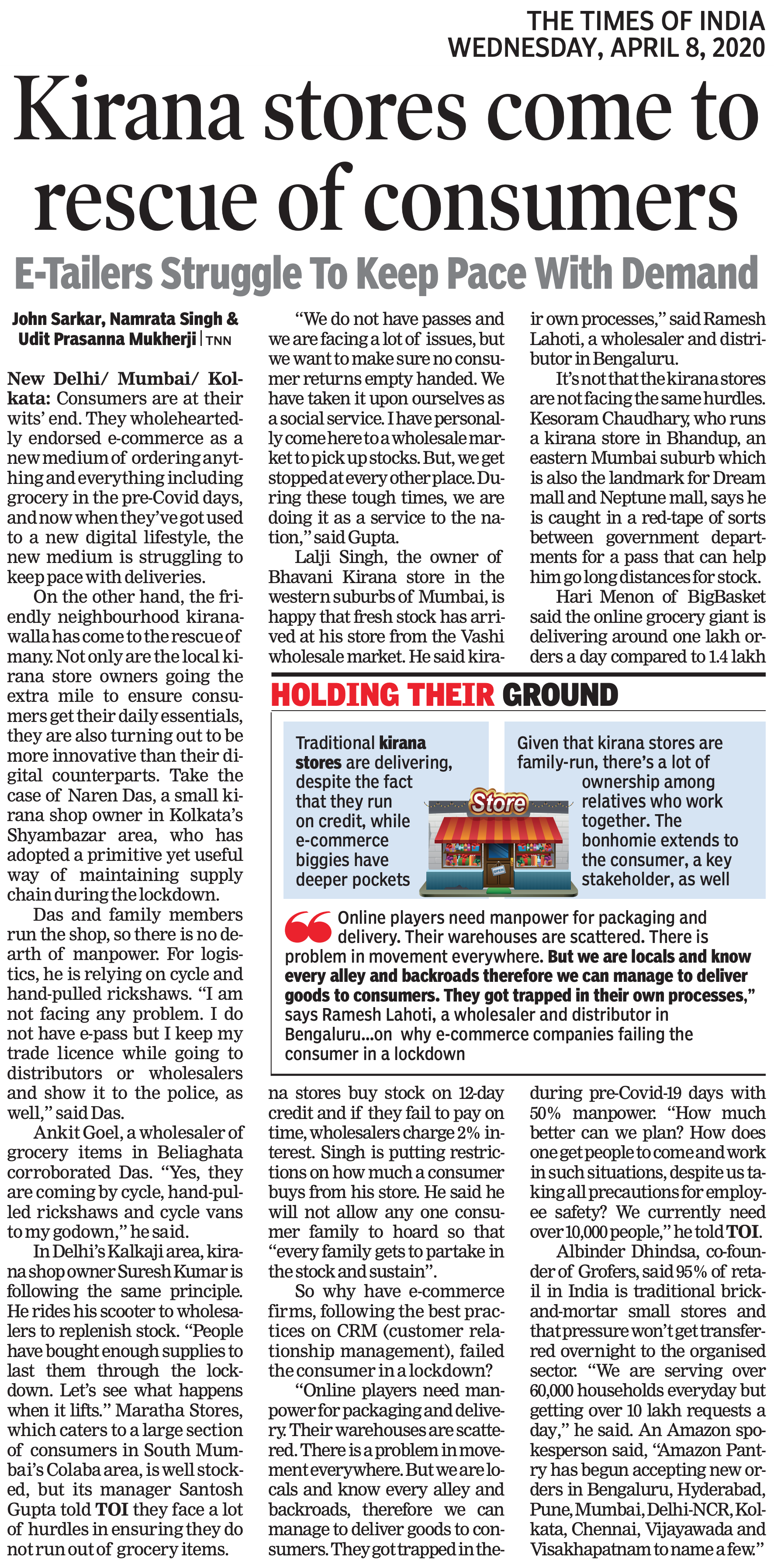
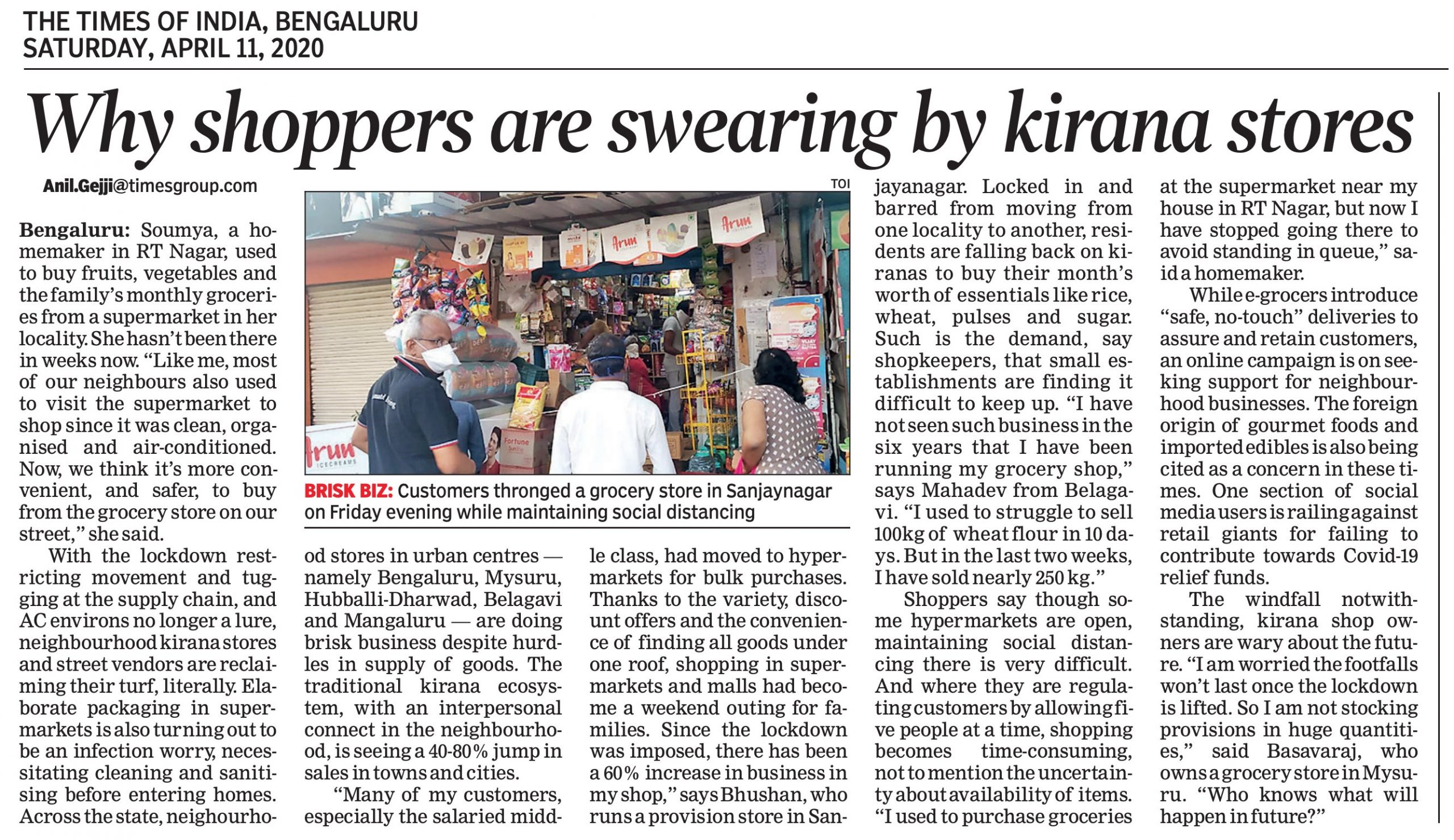
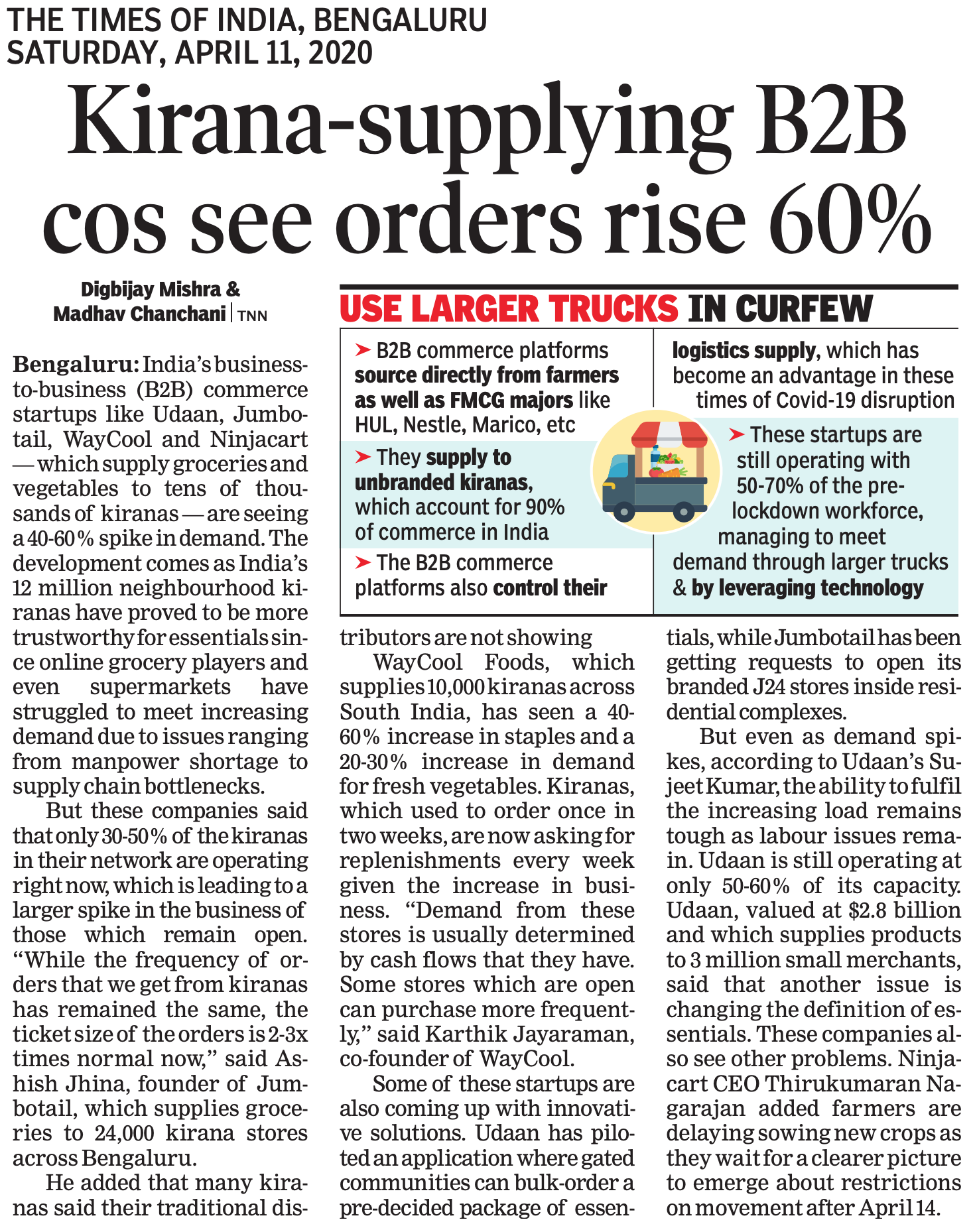

On a related note, here’s a view on COVID-19 accelerating digital transformation, from today’s Mint.
